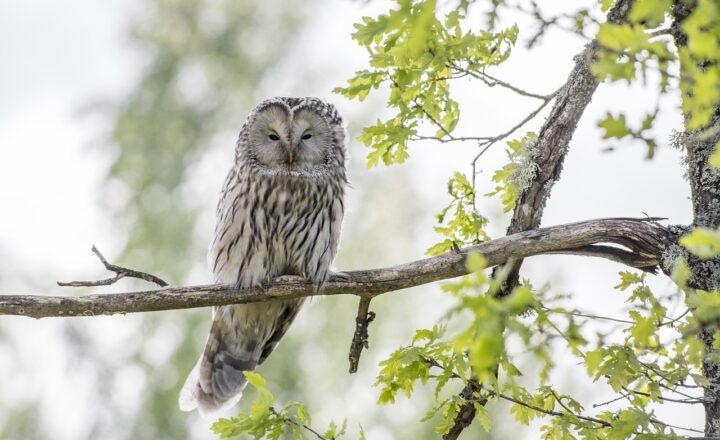How Estuaries Bridge the Gap Between Rivers and Oceans: Unique Habitats and Wildlife
November 14, 2024

Estuaries are remarkable ecosystems where saltwater from the ocean meets freshwater from rivers, creating a dynamic environment teeming with life. They act as a natural filter, a sponge, and a shield against storms, making them some of the most vital areas on our planet. In this article, we will explore the unique habitats and wildlife that make estuaries essential for both the environment and human communities.
1. Understanding Estuaries: Definition and Importance
An estuary is a coastal area where freshwater from rivers and streams flows into the ocean, mixing with saltwater. These coastal lagoons, bays, and river mouths are characterized by brackish water, which is a blend of both fresh and saltwater. Estuaries play a critical role in:
- Biodiversity: They serve as nurseries for many marine species, providing a safe haven for juvenile fish and other wildlife to develop before moving into the ocean.
- Water Filtration: They filter pollutants and sediments from water before it enters the open ocean, enhancing water quality.
- Storm Protection: Estuaries act as buffer zones that absorb storm surges, protecting inland areas from flooding.
The ecological importance of estuaries cannot be overstated, as they are crucial for maintaining healthy marine ecosystems and supporting human livelihoods.
2. Unique Habitats Found in Estuaries
Estuaries are composed of several unique habitats that support diverse wildlife. These include:
- Salt Marshes: These coastal wetlands are dominated by salt-tolerant plants known as halophytes. Salt marshes act as natural sponges, absorbing excess water and providing habitat for various species, such as crabs, birds, and small mammals.
- Mangroves: Found in tropical and subtropical regions, mangroves are trees and shrubs that thrive in salty waters. They provide nesting sites for birds and are home to numerous fish species. Mangroves also stabilize shorelines and reduce erosion.
- Mudflats: These intertidal zones are exposed during low tide and support a variety of organisms, including mollusks, crustaceans, and migratory birds. Mudflats are essential feeding grounds for shorebirds and other wildlife.
Each habitat within an estuary contributes to its overall ecological health, providing essential resources and shelter for countless organisms.
3. The Incredible Wildlife of Estuaries
Estuaries support an impressive range of wildlife. Some notable inhabitants include:
- Fish: Species such as salmon, flounder, and striped bass use estuaries as breeding and nursery grounds. The warm, nutrient-rich waters provide ideal conditions for growth.
- Birds: Many migratory birds rely on estuaries for feeding and nesting. Species like herons, egrets, and ospreys are often spotted in these regions where fish and crustaceans are plentiful.
- Mammals: Estuaries are home to various mammals, including otters, seals, and even dolphins, all of which rely on these habitats for food and shelter.
- Invertebrates: Crabs, shrimp, and mollusks thrive in estuaries, forming a critical part of the food web that supports larger predators like fish and birds.
This rich biodiversity makes estuaries some of the most productive ecosystems on the planet, drawing both wildlife and human communities.
4. The Role of Estuaries in Human Activities
Estuaries serve not only as ecological treasure troves but also support human communities in various ways:
- Fisheries: Many commercial fisheries depend on estuaries for a significant portion of their catch. The estuarine environment is crucial for the life cycles of various fish species.
For example, over 75% of commercial fish species depend on estuaries at some point in their lives. - Recreation and Tourism: Estuaries attract millions of visitors who engage in activities like birdwatching, fishing, and kayaking, contributing to the local economy.
In fact, many beachside towns have developed tourism industries centered around estuarine ecosystems. - Cultural Significance: Many indigenous cultures have relied on estuaries for food, trade, and cultural practices for centuries.
The relationship between humans and estuaries is intricate, involving both benefits and responsibilities.
5. Threats to Estuarine Ecosystems
Despite their importance, estuaries face numerous threats:
- Pollution: Runoff from agriculture, industry, and urban areas introduces harmful chemicals and nutrients into estuaries, degrading water quality and harming wildlife.
- Habitat Loss: Development, shoreline modification, and resource extraction can destroy or alter estuarine habitats, reducing biodiversity.
- Climate Change: Rising sea levels and changing weather patterns threaten estuarine ecosystems, which struggle to keep pace with rapid environmental changes.
Conserving estuaries is essential for protecting their ecological functions and the services they provide to human communities.
Conclusion: Protecting Our Estuaries
Estuaries are invaluable ecosystems that bridge the worlds of rivers and oceans, hosting unique habitats and diverse wildlife. Their ecological importance is matched by their economic and cultural significance to human communities. However, as we face increasing threats to these ecosystems, it is imperative that we act to protect and restore our estuarine environments. This includes promoting sustainable practices, enforcing environmental regulations, and raising awareness of the critical role estuaries play in our planet’s health.
The preservation of estuaries will ensure that they continue to bridge the gap between freshwater and saltwater environments, supporting both the wildlife that depends on them and the communities that thrive alongside them.







